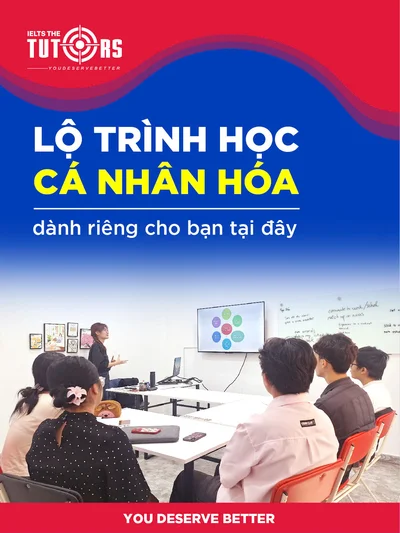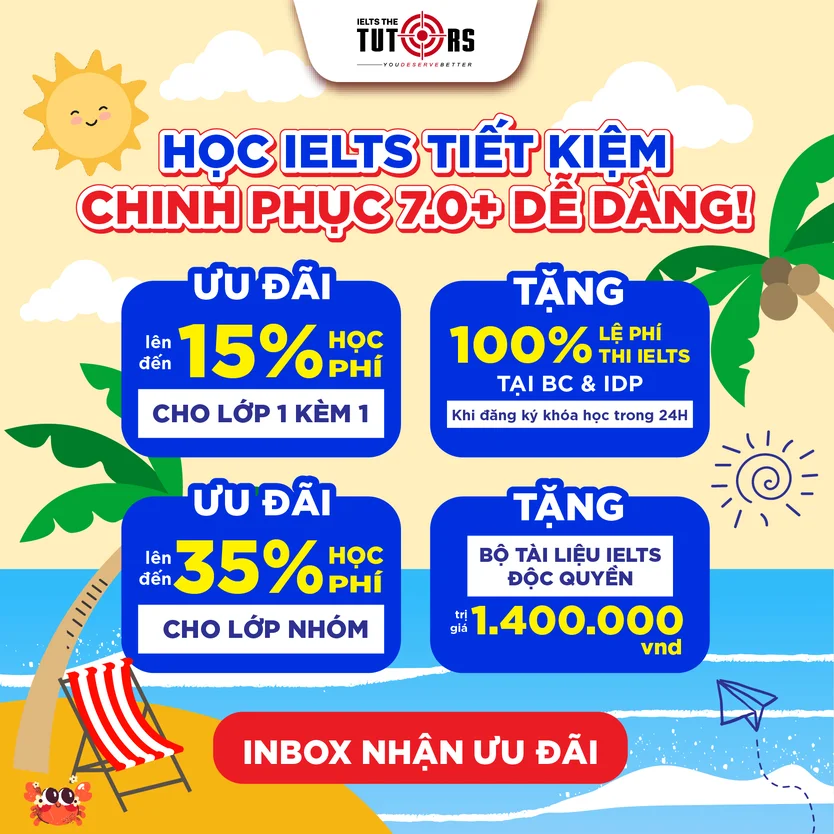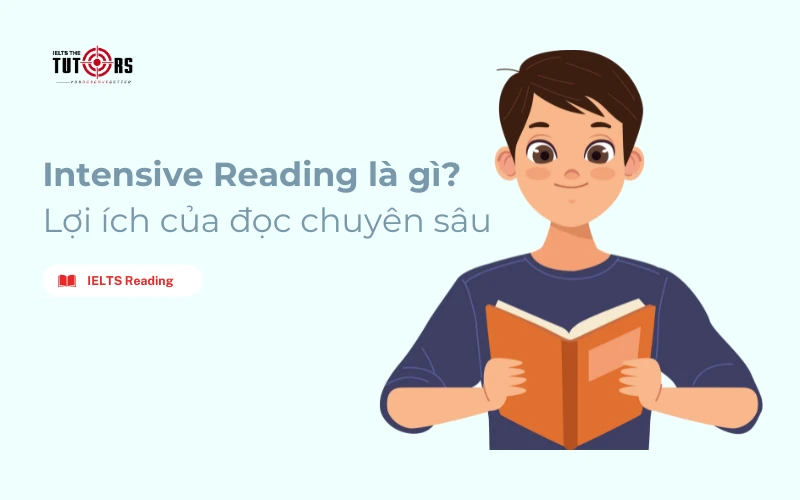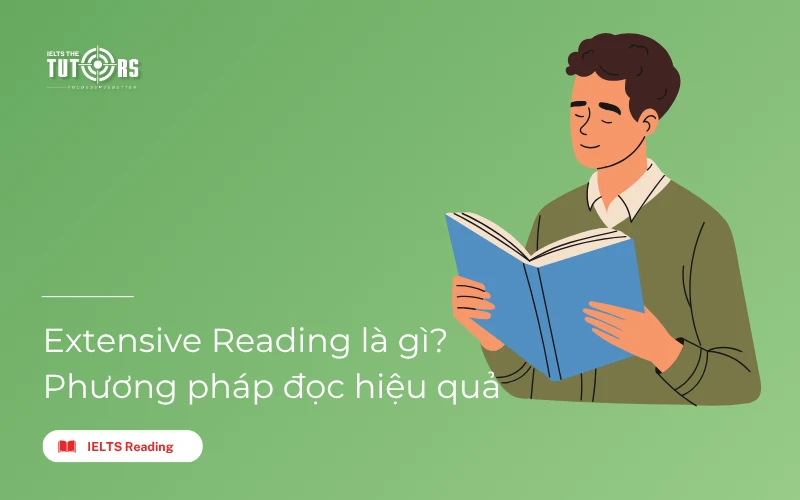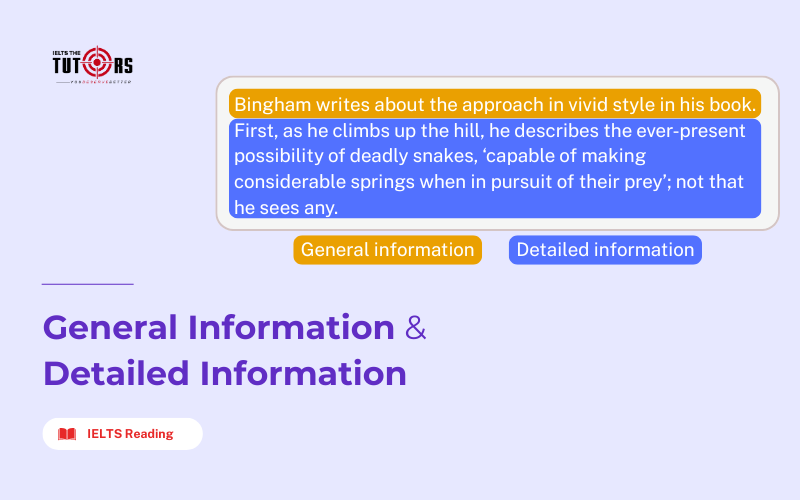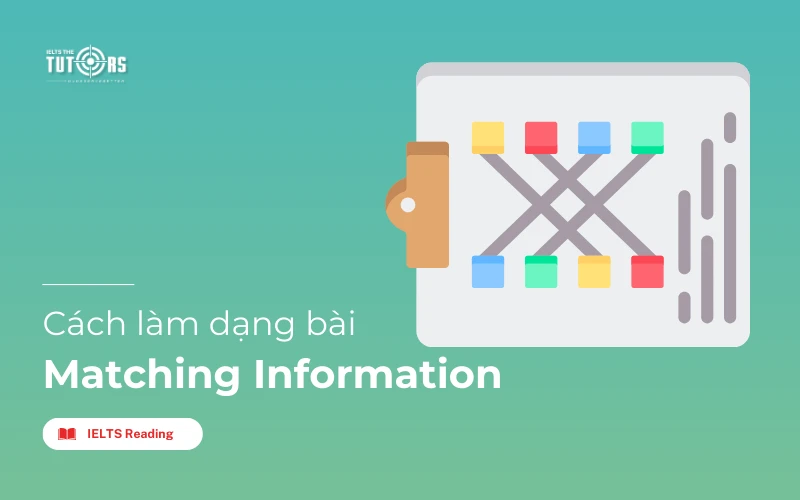
Matching Information là một trong những dạng bài phổ biến trong phần thi IELTS Reading. Dạng bài này được coi là tương đối khó nhằn vì bạn không chỉ phải xác định thông tin trong văn bản mà còn phải so sánh và paraphrase giữa đề bài và đoạn văn.
Vậy đâu là chiến lược hiệu quả để chinh phục dạng bài này? Bài viết dưới đây sẽ gợi ý những bước cơ bản giúp bạn đạt điểm cao nhất trong loại câu hỏi Matching Information, đồng thời chia sẻ những bí quyết giúp bạn tiết kiệm thời gian trong suốt quá trình làm bài.
| Key takeaways |
| Dạng bài Matching Information yêu cầu thí sinh nối các thông tin liên quan với nhau.
3 bước làm Matching Information IELTS Reading
|
Tổng quan dạng bài Matching Information IELTS Reading
Dạng bài Matching Information trong IELTS Reading yêu cầu thí sinh nối các thông tin liên quan với nhau. Đề bài sẽ yêu cầu bạn nối các câu hỏi (statements) với những đoạn văn chứa thông tin phù hợp trong bài đọc được đánh dấu theo thứ tự bảng chữ cái (A, B, C, …). Các câu hỏi thường đề cập đến chủ đề, ý kiến, giải thích, dự đoán, lý do, hoặc những thách thức trong cuộc sống.
Dưới đây là format mẫu đề thi Matching Information IELTS Reading:

Cách làm Matching Information hiệu quả
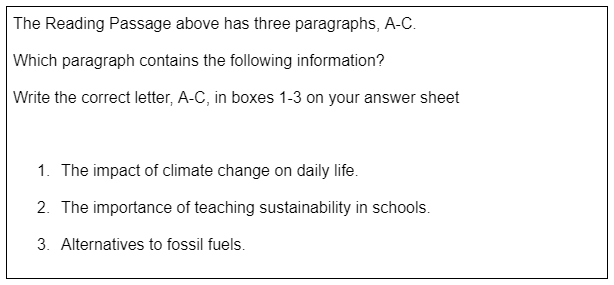
Hướng dẫn cách làm Matching Information IELTS Reading hiệu quả
Để làm dạng bài Matching Information IELTS Reading hiệu quả, bạn hãy áp dụng các bước làm bài vào ví dụ dưới đây:
Amundsen's Expedition to the South Pole
A) The first expedition to reach the geographic South Pole was led by the Norwegian explorer Roald Amundsen. He and four others arrived at the pole on 14 December 1911, five weeks ahead of a British party led by Robert Falcon Scott as part of the Terra Nova Expedition. Amundsen and his team returned safely to their base, and later learned that Scott and his four companions had died on their return journey.
B) Amundsen's plans had focused on the Arctic and the conquest of the North Pole by means of an extended drift in an icebound ship. He obtained the use of Fridtjof Nansen's polar exploration ship Fram, and undertook extensive fundraising. Preparations for this expedition were disrupted when, in 1909, the rival American explorers Frederick Cook and Robert E. Peary each claimed to have reached the North Pole. Amundsen then changed his plan and began to prepare for a conquest of the South Pole; uncertain of the extent to which the public and his backers would support him, he kept this revised objective secret. When he set out in June 1910, even most of his crew believed they were embarking on an Arctic drift.
C) The expedition's success was widely applauded. The story of Scott's heroic failure overshadowed its achievement in the United Kingdom, unable to accept that a Norwegian had been the first person to set foot in the South Pole, but not in the rest of the world. Amundsen's decision to keep his true plans secret until the last moment was criticised by some. Recent polar historians have more fully recognised the skill and courage of Amundsen's party; the permanent scientific base at the pole bears his name, together with that of Scott. (passage from wiki)
Questions 1-6
In which paragraph (A-C) is the following information found. Letters may be used more than once.
1. The success of Roald Amundsen was celebrated worldwide, except in one country.
2. Amundsen only heard about the death of Scott after he had reached the South Pole.
3. The base at the South Pole bears both Amundsen's name and Scott's.
4. Amundsen had originally planned an expedition to the North Pole.
5. When Amundsen decided to aim for the South Pole he did not reveal his intentions.
6. The British did not celebrate Amundsen's success as did other countries due to the death of Scott.
Bước 1: Đọc kỹ đề bài và gạch chân từ khóa
Bước đầu tiên là hãy xác định yêu cầu của đề bài và xác định các keyword trong câu hỏi làm nổi bật chúng, điều này sẽ giúp bạn nhanh chóng nắm bắt ý chính. Khi đã hiểu rõ nội dung câu hỏi, việc tìm kiếm thông tin từ các đoạn văn liên quan sẽ trở nên dễ dàng hơn.
Trong quá trình gạch chân từ khóa, bạn nên chú ý đến 2 loại từ khóa sau:
- Unchangeable keywords: Đây là những từ khóa không bị thay đổi như tên riêng, số liệu, ngày tháng và thuật ngữ khoa học. Những từ này thường khó thay thế trong văn bản, vì vậy bạn nên ưu tiên xác định chúng để tìm kiếm thông tin chính xác.
- Changeable keywords: Đây là những từ khóa có thể được paraphrase trong bài đọc. Chúng có thể chuyển đổi thành từ đồng nghĩa, hoặc thay đổi sang động từ, tính từ hoặc cụm danh từ. Việc nắm vững những từ khóa này sẽ giúp bạn tìm kiếm thông tin liên quan hiệu quả hơn
Gạch chân những từ khóa trong câu hỏi từ 1 – 6 các từ vựng có thể thay đổi như sau:
Câu 1:
Changeable keyword: success, celebrated worldwide, except one
Unchangeable keyword: Roald Amundsen vì nó là tên riêng
Câu 2:
Changeable keyword: only, the death of, reached
Unchangeable keyword: Amundsen, Scott và South Pole vì nó là tên riêng
Câu 3:
Changeable keyword: The base, bear
Unchangeable keyword: South Pole Amundsen's name and Scott’s với lý do như trên
Câu 4:
Changeable keyword: planned expedition, originally
Unchangeable keyword: North Pole
Câu 5:
Changeable keyword: aim for, reveal his attention
Unchangeable keyword: Amundsen, South Pole
Câu 6:
Changeable keyword: celebrate, success, due to the death of
Unchangeable keyword: British, Amudsen, Scott
Bước 2: Scanning và tìm từ khóa

Trong phần này, bạn sẽ cần vận dụng kỹ năng Scanning (đọc lướt để tìm kiếm từ khóa). Để áp dụng kỹ năng này hiệu quả, bạn cần:
- Hiểu rõ yêu cầu của câu hỏi: Xác định chính xác thông tin cần tìm trong bài đọc.
- Xác định từ khóa: Nhận diện các từ khóa trong cả câu hỏi và bài đọc.
- Đọc lướt bài đọc: Tìm kiếm các từ khóa đã xác định trong văn bản.
- Chú ý đến từ đồng nghĩa và trái nghĩa: Các từ khóa có thể được diễn đạt theo nhiều cách khác nhau.
- Loại trừ thông tin không liên quan: Tập trung vào các thông tin phù hợp với câu hỏi, giúp bạn tiết kiệm thời gian và tăng độ chính xác.
Vì dạng câu hỏi này không theo thứ tự nên mình sẽ đọc lướt qua bài đọc và đọc kĩ yêu cầu đề bài là 1 từ sẽ dùng được trên 1 lần nhé!
Trong đoạn A, sau khi đọc lướt ta có tóm được thông tin như sau:
- Expedition to South Pole was lead by Amudsen, 5 weeks ahead Scott – a british expeditors,
- Go home and then found out Scott and his companions had dead => Câu 2
Đoạn B:
- Prepare to go to the North Pole, but 2 other explorer have already explorer => Câu 4
- Amudsen then started to aim to prepare for South Pole => Câu 5
Đoạn C:
- Scott's heroic failure overshadow its achievements in UK => Câu 1, 6
- The scientific base at the pole bears his name and Scott => Câu 3
Bước 3: Đối chiếu thông tin và chọn đáp án
Việc đối chiếu thông tin chủ yếu nhằm xác thực một lần nữa xem thông tin có chính xác nằm trong đoạn văn này hay không.
Thông thường, các từ khóa có thể xuất hiện ở:
- Một đoạn duy nhất: Khi đó, bạn có thể dễ dàng chọn ngay đáp án.
- Nhiều đoạn khác nhau: Trong trường hợp này, bạn cần đối chiếu lại tất cả các thông tin để đảm bảo đáp án chính xác.
Ở đoạn B và C có 1 câu về việc Amudsen giữ bí mật về hành trình thám hiểm South Pole tuy nhiên ở đoạn C khác B là ở đoạn C việc Amudsen làm “was criticised” còn đoạn B là he was actively planning to do that nên đáp án đúng là B.
Xem thêm:
Những lưu ý khi làm dạng Matching Information

Lưu ý khi làm IELTS Reading Matching Information
Để làm giải quyết dạng bài Reading Matching Information hiệu quả, bạn cần lưu ý một số điều dưới đây:
- Thứ tự đáp án trong bài đọc không theo thứ tự của các lựa chọn trong bài đọc.
- Một số đoạn văn có thể sẽ không chứa bất kỳ câu trả lời nào
- Trong bài đọc có rất nhiều từ đồng nghĩa để diễn đạt cho cùng một thông tin.
- Khác với dạng bài Matching Heading (Nối tiêu đề), dạng bài Matching Information yêu cầu bạn tìm kiếm các thông tin chi tiết thay vì ý chính của đoạn văn.
- Có thể thu hẹp phạm vi (vùng) tìm kiếm câu trả lời bằng cách loại trừ các đoạn văn không liên quan
- Thông tin thường nằm trong một cụm từ hoặc cả một câu chứ không phải chỉ là một từ riêng lẻ
Một số tips làm dạng Matching Information IELTS Reading
- Nắm vững kỹ năng Skimming và Scanning, 2 kỹ năng này cực kỳ quan trọng không chỉ trong dạng bài Matching Information mà còn giúp bạn làm các dạng bài khác hiệu quả và tiết kiệm thời gian
- Xây dựng vốn từ vựng phong phú là rất cần thiết để bạn có thể hiểu và tìm kiếm từ khóa chính xác trong bài thi vì dạng bài này sử dụng rất nhiều từ đồng nghĩa và thông tin được paraphrase khác đi nhằm đánh lừa thí sinh.
- Bạn hãy ưu tiên làm các dạng bài khác trong cùng bài đọc trước khi đến dạng Matching Information.
- Bạn nên tiên tìm kiếm các thông tin đơn giản trước, thường là những lựa chọn chứa từ khóa dễ tìm như số liệu, tên riêng, địa điểm và ngày tháng. Khi đó, bạn sẽ giải quyết được nhiều câu hỏi hơn trong thời gian hạn chế.
Tham khảo: Tác dụng của Intensive và Extensive Reading với việc học IELTS Reading
Bài tập vận dụng
Passage: Carnivorous Plants
A) Sarracenia, or the North American Pitcher plant, is a Genus of carnivorous plants indigenous to the eastern seaboard, Texas, the great lakes and south eastern Canada, with most species being found only in the southeast states. It is a plant with a pitfall trap. The plant's leaves have evolved into a funnel, with a hood like structure growing over the opening to prevent rain water from diluting the digestive juices. Insects are attracted by colour, smell and a nectar-like secretion on the lip of the pitcher. Slippery footings, aided in at least one species, by a narcotic drug lacing the nectar, causes insects to fall inside where they die and are digested.
B) Nepenthes, tropical pitcher plants or monkey cups, are another genus of carnivorous plants with pitfall traps. There are about 130 species that are wide spread, and can be found in China, Malaysia, Indonesia, Philippines, Madagascar, Seychelles, Australia, India, Borneo and Sumatra. The nickname “monkey cups” comes from the fact that monkeys have often been observed drinking rain water from them. The trap contains fluid, produced by the plant, which is used to drown and digest the insects. Most of these plants are small and tend to trap only insects, but some larger species, such as Nepenthes Rafflesiana and Nepenthes Rajah, have been documented to catch small mammals like rats.
C) Dionaea Muscipula, more commonly known as a Venus flytrap, is probably the most well-known carnivorous plant and it feeds mainly on insects and arachnids. The Venus flytrap is a small plant that has 4-7 leaves that grow from a short subterranean stem. The plant is so advanced that it can tell the difference between live stimulus and non-living stimulus. The lobes snap shut in about 0.1 seconds. They are fringed by stiff thorn-like protrusions or cilia, which mesh together and prevent large prey from escaping. Once prey is unable to escape and the inner surfaces of the lobes are continuously being stimulated, the edges of the lobes grow or fuse together, sealing the trap and creating an enclosed “stomach” in which digestion and absorption can take place.
D) Aldrovanda vesiculosa, also known as the waterwheel plant, is a fascinating rootless, carnivorous, aquatic plant. It generally feeds on small aquatic vertebrates, using a trap mechanism called a snap trap. This is a very fast growing plant and can reach 4-9mm per day, in some instances even producing a new whorl every day. The traps basically consists of two lobes which fold together to make the snap traps. The openings of the trap point outwards, and are covered in a fine coating of trigger hairs, which will cause the trap to snap shut around any prey that comes too close. The trap closes in only 10 milliseconds, making it one of the fastest examples of plant movement in the animal kingdom.
Questions 1-7
Which paragraph contains the following information? Write the correct letter, A-D, as answers. Note, you may use any letter more than once.
1. The plant preys on animals that live in water.
2. The plant is able to tell the difference between prey and inedible items.
3. Prey is known to die through submersion in liquid.
4. Prey is drawn to the plant by its appearance.
5. The plant is known for its speed in trapping prey.
6. The soporific effect of the nectar can cause prey to tumble into the plant's trap.
7. The plant is capable of trapping creatures large than an average insect.
Hướng dẫn
Bước 1: Gạch chân các keyword:
1. Changeable keyword: plants, prey, animal, live in water
2. Changeable keyword: plant, able, tell, difference, prey, inedible
3. Prey, die, submersion, liquid
4. Prey, drawn to, plant, appearance
5. Plant, speed, trapping prey
6. soporific effect, nectar (unchangeable keyword), prey, tumble, plant's trap
7. Plant, capable, trapping creatures, large, average insect
Bước 2: Như trên, hiểu yêu cầu đề bài là có thể dùng 1 chữ cái nhiều lần
Bước 3: Đọc lướt và kiếm tóm tắt ý mỗi đoạn
Đáp án:
1. D
2. C
3. B
4. A
5. D
6. A
6. B
Matching Information là dạng bài khó với tần suất xuất hiện thường xuyên trong bài thi IELTS Reading. Để chinh phục dạng bài này, bạn nên kiên trì luyện tập và áp dụng cách làm Matching Information IELTS Reading hiệu quả, hy vọng phương pháp làm bài này sẽ giúp bạn gỡ rối và tiến bộ nhanh hơn trong quá trình luyện thi IELTS.
Tại IELTS The Tutors cung cấp các khóa học IELTS chuyên sâu với nhiều phương pháp làm bài tối ưu nhất, giúp bạn không chỉ biết cách làm bài mà còn hiểu rõ đặc điểm chi tiết của từng dạng bài, nếu trong quá trình tự học IELTS có quá nhiều khó khăn mà bạn không thể khắc phục được, hãy để IELTS The Tutors giúp bạn phát triển tiếng Anh một cách nhanh chóng và hiệu quả nhé!

